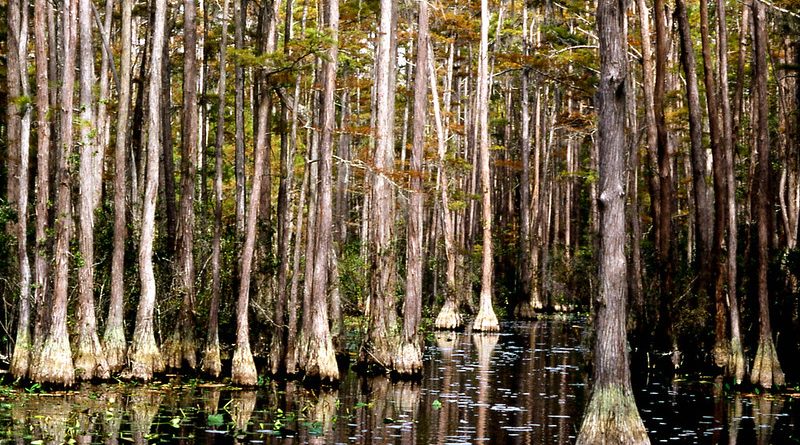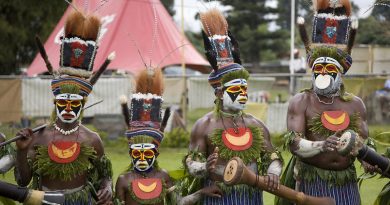Canoeing the Okefenokee Swamp
Trek Essentials
Where: Covers South Georgia and North Florida, Southeast USA
Best season: Any month, avoiding the hot and humid summer
Best Sights: Sunbathing alligators, swamp insect music
Remember to Bring: high energy foods, water, insect repellent, snake bite kit, litter bag and jungle hammock
Populated by alligators and rattlesnakes, the Okefenokee Swamp covers 700 square miles of hauntingly beautiful wilderness in south Georgia and north Florida. The Seminole Indians named it “Land of Trembling Earth”. Its floating peat islands are eight thousand year old.
The swamp is designated as a National Wildlife Refuge, protecting the headwaters of the Suwanee and St Mary’s Rivers from development. There are 4 entrances to the Okefenokee, 2 on the west side, one in the north and one on the east side. If you’re looking for a truly unusual adventure, the Okefenokee is one of the most primeval and stunning places you can visit in the United States.
Highlights
- Listening to the swamp sounds at dusk When the sun goes down the volume goes up. It’s as if the swamp comes alive with the sound of insects and animals.
- Catching your dinner! Fishing in the Okefenokee is easy: where you find fish, you find ‘gators. They’re no fools. You just dangle a pole over and the fish is yours.
- Watching alligators basking in the sunshine on the floating islands of the Okefenokee.
Our Journey Path
There are many different routes you can take into the Okefenokee Swamp, lasting from day trips, to more extensive week-long expeditions. We embark on a three day journey, starting at Kingfisher Landing. With our guide Sheila, we canoe thirty miles through the swamp, and spend the night at Maul Hammock. After learning about the local snake population from wildlife expert Fred Wetzel, we head through Big Water lake, on to Billy’s Island where Sheila’s family, an old swamp-residing clan, show us what swamp life was like in the olden days.
Traveller’s Tips
- The swamp terrain is flat. There is no fast water and very little dry land. Your paddle will be used every inch of the way as you wind through cypress forests or cross open ‘prairies’ exposed to the sun and win. Motors are not permitted on canoe trails, so get those arms in shape!
- Temperatures are mostly mild, but can get quite hot and very humid during the summer months, which is normally the rainy season. Lightning is probably the most serious hazard of an Okefenokee wilderness experience, so seek shelter if a storm strikes.
- Each traveller is required by law to have a standard-approved life preserver at all times. Canoeist must register in person when entering and leaving the swamp.
- Because of the danger of alligators, pets are not allowed into the swamp.
- You must have two or more people in your group to canoe. No solo travel is permitted in the swamp.
- Local wildlife rangers recommend you come equipped with: high energy instant foods, drinking water, insect repellent, mosquito netting, rain gear, compass, first aid kit, snake bite kit, extra batteries, extra film, litter bag (it’s all got to be taken out with you!), a tent and/or jungle hammock and a sleeping bag.
Did You Know?
- There are about 10,000 alligators in the Okefenokee swamp and canoeing is the best way to see them.
- Wildlife is abundant in Okefenokee every month of the year. Sandhill cranes, ducks and other migratory birds are most numerous from November through March, and otters are commonly seen during cold weather when alligators are scarce. Alligators are active in spring, summer and autumn, but are observed mostly sunning themselves on the banks during spring and autumn.
- Throughout the swamp, you’ll see ‘jungle hammocks’ or moving islands of trees. These are created by gas trapped in peat and blowing up onto the surface. Vegetation holds this peat together forming the hammocks. If they root to the ground they eventually become islands. Boats are flat-bottomed in order to avoid these peat blow-ups. The canoes are typically 16ft long and hold 500-600lbs – plenty big enough to carry all your gear.
- A total of 65 ‘Indian Mounds’ have been uncovered in this area. They are thought to date back about 4,000 years, to when the swamp was first inhabited by humans. The last Indians to live in the Swamp were Seminoles who moved into the swamp as Europeans arrived in the area in the early 19th century. They were finally forced out in 1838 and fled to Florida after a final stand by their chief.
- Billy’s Island, near the Stephen Foster entrance, was home to a logging boomtown which in the 1920’s had a population of 600. No one lives here at all now but you can still see the rusty remains of old stills and bed frames which were left behind when the last families moved out. You can also visit the old Lee family cemetery, an 1850’s homesteading family.
More Information
Folkston Chamber of Commerce
A superb website which will tell you all you need to know about the Okefenokee Swamp, how to get there and how to get around.
For Canoe trips into the swamp contact:
Kingfisher & Beyond Canoe Outfitters
c/o RT 3, Box 970
Folkston, Georgia 31537 USA
Tel: (912) 496 4834
If you have your own canoe and want to arrange a trip, you’ll need permits and reservations. Contact:
Okefenokee National Wildlife Refuge
P.O. Box 117
Waycross, Georgia 31501 USA
Tel: (912) 283 2580
The lodging in the swamp is on raised platforms where you pitch your tent. You’ll need to reserve these ahead of time.
Okefenokee National Wildlife Refuge
Route 2, Box 3330
Folkston, Georgia 31537 USA
Tel: (912) 496-3331
The Inn at Folkston
509 West Main Street
Folkston, Georgia 31537 USA
Tel/Fax: (912) 496-6256 Toll Free: (888) 509 6246
Email: info *at* innatfolkston.com
Stephen Foster State Park (within the Okefenokee)
Cabin accommodation
Tel: (912) 637 5274




